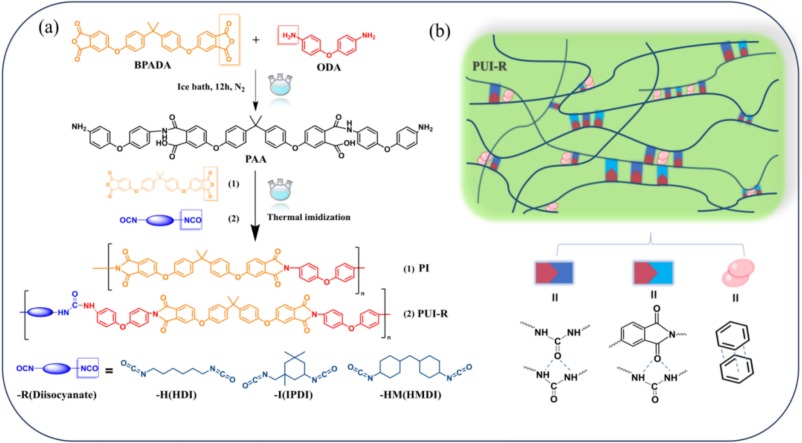Abstract
Regulating the tribological properties of shape memory polyimide and exploring their tribological mechanisms are of great significance in promoting the application of smart lubricant materials. Herein, by engineering intermolecular dynamic hydrogen bond interaction of shape memory polyimide, a series of isocyanate-based polyimide-urea (PUI) shape memory copolymers were synthesized and their tribological mechanisms were systematically investigated. The results indicated that PUI-H with multiple hydrogen bonding show significantly enhanced tribological performance. At room temperature, the friction coefficient of PUI-H is as low as 0.127, which is 72.4 % lower than that of PI. The wear rate is as low as 0.297 x 10-5 mm3/(N & sdot;m), which is 85.2 % lower than that of PI. Further characterization results demonstrated that this excellent tribological performance attribute to the intermolecular multiple dynamic hydrogen bond network structure, which maintain a high degree of physical cross-linking at room temperature, whereas generate a low shear effect during the friction process accompanied by the dissociation of hydrogen bonds afterwards promote the rapid formation of a dense and continuous tribofilm on the surface of the steel ball, effectively reducing the coefficient of friction. Meanwhile, the dynamic reorganization of the hydrogen bonding network and the synergistic effect of it-it stacking interactions promote the structural ordering of the molecular chain network, which strengthens the load-bearing capacity of PUI-H, and thus significantly improves the wear resistance of the material.

Keywords Plus:POLYUREA,FRICTION
Published in CHEMICAL ENGINEERING JOURNAL,Volume523;10.1016/j.cej.2025.168441,NOV 1 2025


